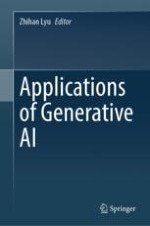2024 | OriginalPaper | Buchkapitel
Plant Data Generation with Generative AI: An Application to Plant Phenotyping
verfasst von : Swati Bhugra, Siddharth Srivastava, Vinay Kaushik, Prerana Mukherjee, Brejesh Lall
Erschienen in: Applications of Generative AI
Aktivieren Sie unsere intelligente Suche, um passende Fachinhalte oder Patente zu finden.
Wählen Sie Textabschnitte aus um mit Künstlicher Intelligenz passenden Patente zu finden. powered by
Markieren Sie Textabschnitte, um KI-gestützt weitere passende Inhalte zu finden. powered by
